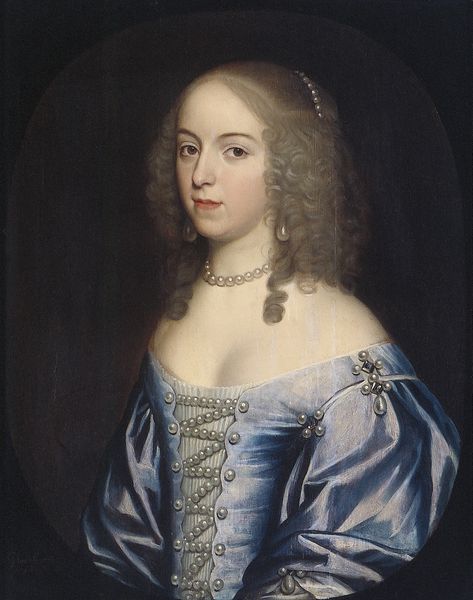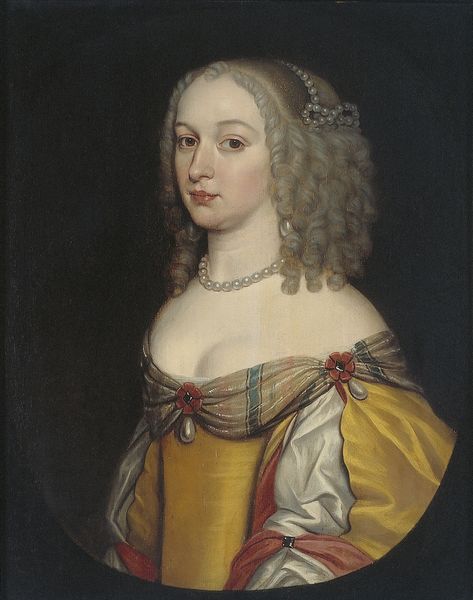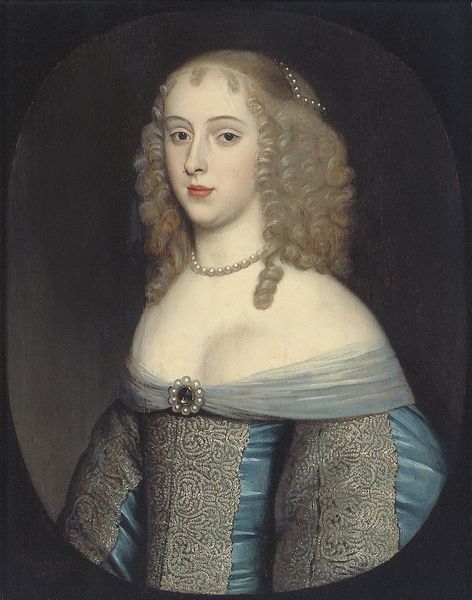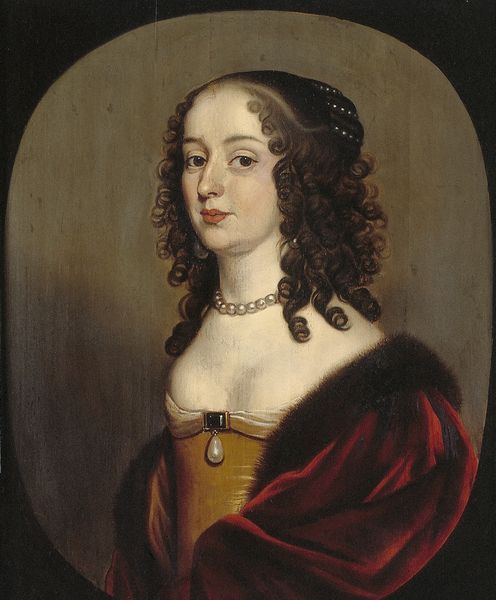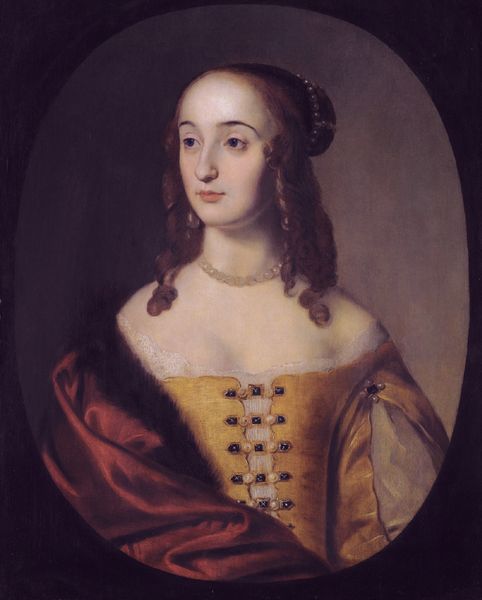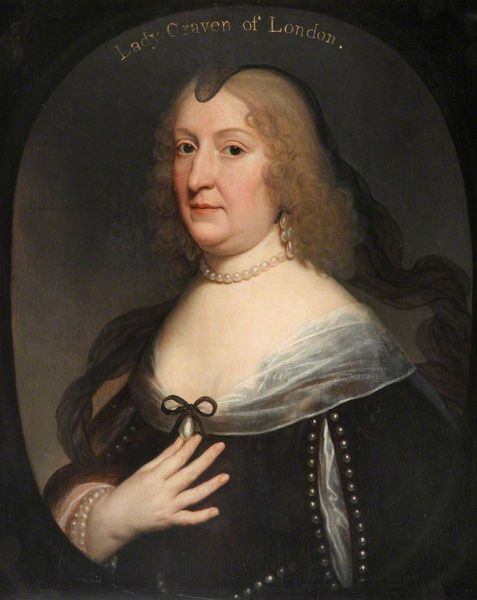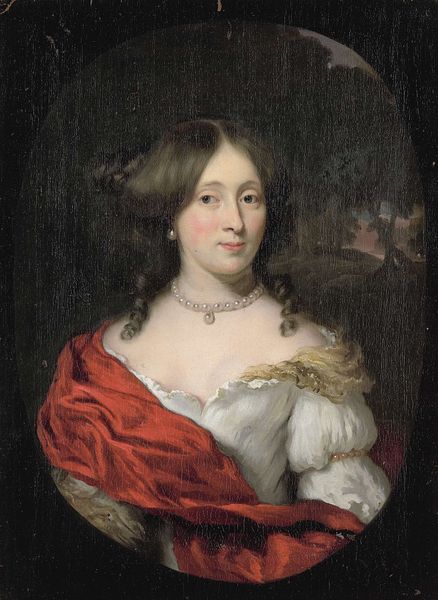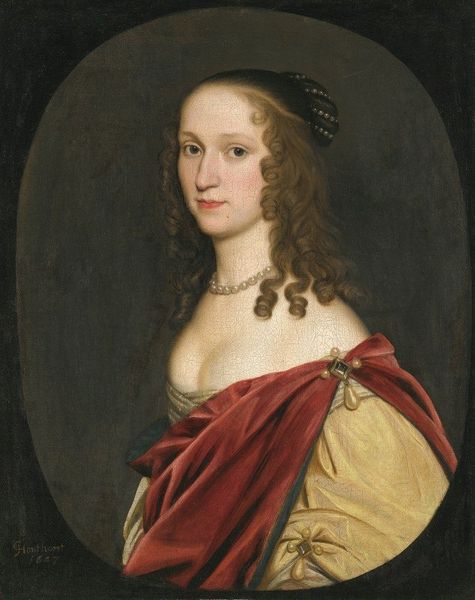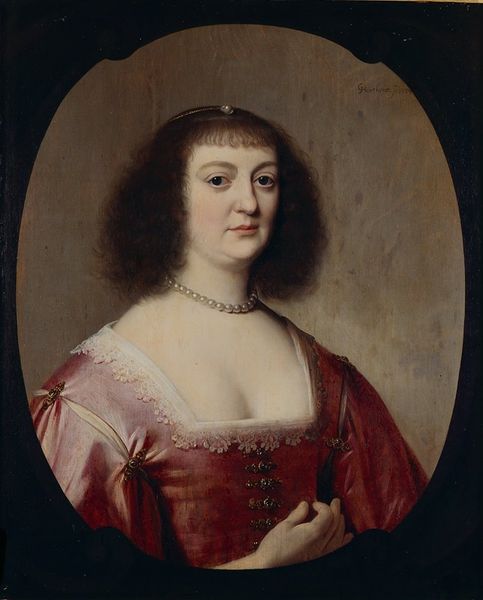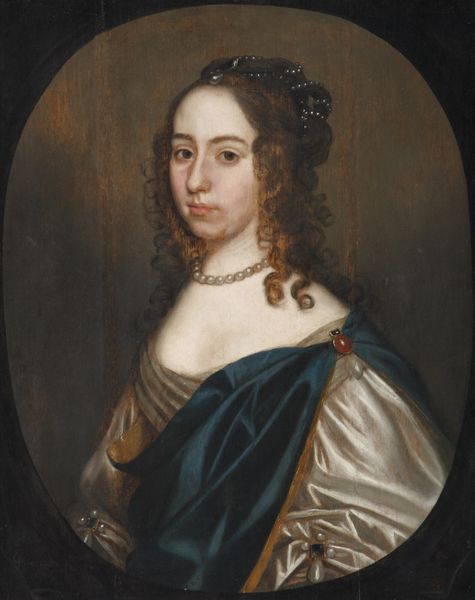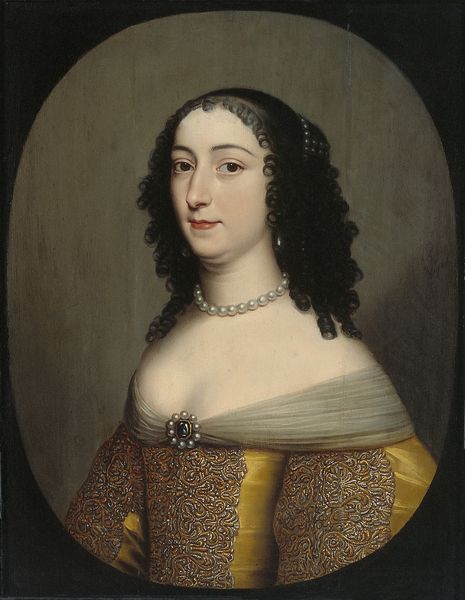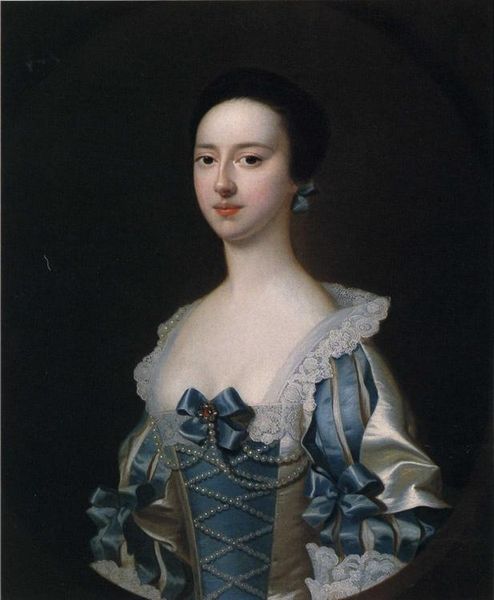
oil-paint
#
portrait
#
baroque
#
oil-paint
#
history-painting
#
academic-art
Copyright: Public domain
Editor: This is Gerard van Honthorst’s “Mauritia Margaretha Van Nassau-Beverweerd,” painted in 1649 using oil on what seems to be panel. There's a formality to it, but I also feel a certain aloofness in her expression. What can you tell me about how we're meant to read this portrait? Curator: It’s fascinating how portraits like this encode so much about status and identity. Notice the pearls. More than just adornment, they symbolize purity and wealth, recurring motifs in depictions of noble women across centuries and cultures. What do you think the pearl's placement and repetition might signify here, especially connected to her family name? Editor: Well, there are so many of them - the necklace, on her sleeves, even laced into the front of her gown! That feels like overkill – an almost blatant flaunting of status. Are there other symbols beyond the pearls? Curator: Indeed. Red, in paintings of this era, signified not only prosperity, but also passion and even sacrifice. Given that Mauritia was part of the House of Orange-Nassau, deeply involved in Dutch politics and warfare, consider how those rich reds hint at her lineage's historical weight. Does this resonate with how artists have historically linked color with specific meanings in other works you've studied? Editor: Definitely, color is never accidental. Thinking about those layered meanings changes how I see her – she's not just posing, she’s presenting a calculated image of power. Curator: Precisely! Recognizing these visual symbols grants us access to the artist's intent and a broader cultural narrative about female nobility during this time. Now consider, what aspects of ourselves will future portraiture immortalize? Editor: I never considered all that just looking at a face. It really makes history come alive through something as simple as a pearl necklace!
Comments
No comments
Be the first to comment and join the conversation on the ultimate creative platform.
